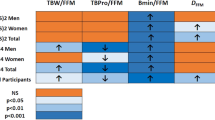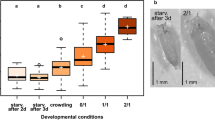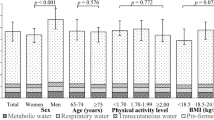Abstract
IN recent letters Mr. R. W. Jack1 and Dr. C. H. N. Jackson2 state that, when considering the effects of climate on tsetse metabolism, it is valuable to express the percentage of water present in the insects at different times as a function of the ” fat-free” dry weight. This is because the amounts of this food-reserve vary greatly; it occurs concentrated in the fat-body and not in large amounts in the individual cells of the vital tissues. Jack and Jackson imply that their methods show the conditions in the tissues of the tsetse more accurately than do gross percentages of water and dry matter present in the bodies of the insects.
This is a preview of subscription content, access via your institution
Access options
Subscribe to this journal
Receive 51 print issues and online access
$199.00 per year
only $3.90 per issue
Buy this article
- Purchase on SpringerLink
- Instant access to full article PDF
Prices may be subject to local taxes which are calculated during checkout
Similar content being viewed by others
References
Jack, R. W., NATURE, 139, 31 (1937).
Jackson, C. H. N., NATURE 139, 674–5 (1937).
Mellanby, K., Bull. Ent. Res., 27, 611–32 (1936).
Wigglesworth, V. B., Proc. Roy. Soc., B, 109, 354–59 (1931).
Author information
Authors and Affiliations
Rights and permissions
About this article
Cite this article
MELLANBY, K. Water and Fat Content of Tsetse Flies. Nature 139, 883 (1937). https://doi.org/10.1038/139883a0
Issue date:
DOI: https://doi.org/10.1038/139883a0
This article is cited by
-
Blood and fluid balance of the common tarantula, Dugesiella hentzi
Zeitschrift f�r Vergleichende Physiologie (1970)



